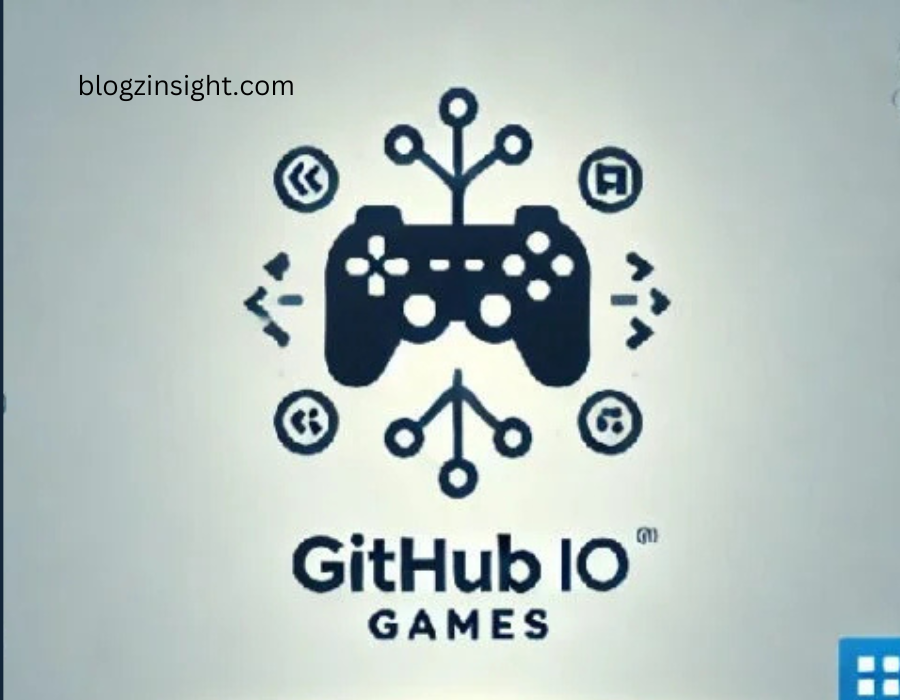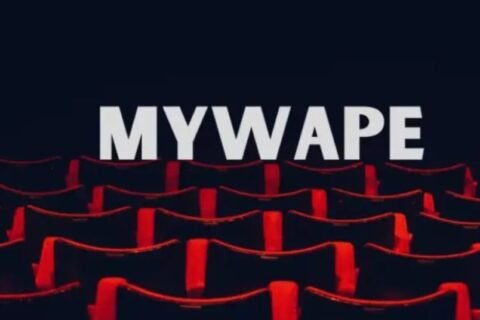Introduction
Creating a game can feel like building an entire world from scratch. From coding the mechanics to designing characters, the process requires a combination of skills, creativity, and (let’s be honest) a bit of grit. Fortunately, github.io Games is home to a treasure trove of tools that simplify game development and make it fun. Whether you’re a beginner looking to create a simple 2D platformer or an experienced developer ready to launch a complex RPG, the tools on github.io Games can help you bring your vision to life.
In this article, we’ll break down six game development tools on github.io Games that can unlock creativity and turn your ideas into playable realities. Let’s dive in and explore how these tools can supercharge your game development journey!
Why Choose github.io Games for Game Development?
Before we dive into the tools, let’s take a moment to understand why github.io Games is such a valuable resource for developers. Github.io is a platform for hosting code repositories, and when it comes to game development, it offers access to tools and libraries built and shared by developers worldwide. For aspiring game creators, it’s a one-stop shop for learning, experimenting, and finding tools that streamline complex tasks.
Here’s what makes github.io Games a go-to choice for game development:
- Open-Source Freedom: You get to work with tools that are free and community-supported.
- Vast Resources: There are tools for every aspect of game development, from design to physics engines to AI.
- Learning Opportunities: Github.io Games also offers valuable insights and documentation from seasoned developers who share their work.
Now that you know the perks, let’s dive into these six amazing tools!
1. Phaser.js – The Power of 2D Game Development
Phaser.js is one of the most popular frameworks for developing 2D games, and for good reason. Built on JavaScript, it’s accessible, flexible, and powerful. If you’re looking to create games like side-scrollers, puzzle games, or top-down shooters, Phaser.js is a tool that keeps things straightforward.
Why Phaser.js is Awesome
Phaser.js offers a high degree of control without bogging you down in complex coding jargon. With features like scene management, input control, and built-in physics, Phaser lets you create sophisticated gameplay with ease.
What You’ll Love About Phaser.js
- Built-in Physics: Phaser comes with both arcade and advanced physics engines, giving you control over object movement.
- Flexible Graphics Options: It supports both WebGL and Canvas, so you get beautiful visuals across devices.
- Quick Community Support: With a huge community on github.io, there’s plenty of documentation and forums to help you along the way.
In short, Phaser.js is like the Swiss Army knife of 2D game development. Beginners and pros alike can use it to create polished games.
2. Tiled – Map Design Made Easy
When it comes to creating game maps, Tiled is a game-changer. This flexible, open-source map editor allows you to design maps for 2D games with tiles, and it’s compatible with most frameworks and engines.
Why Tiled Makes Life Easier
Map creation can be tedious without the right tools. Tiled offers a grid-based approach that’s intuitive and speeds up the design process. It also lets you layer multiple tiles to create intricate environments.
Top Features of Tiled
- Layering System: Build maps in layers, adding details like background, collision, and object layers.
- Easy Exporting: Export maps in multiple formats that work with most game engines.
- Custom Properties: Set properties for specific tiles to create unique behaviors in the game.
Using Tiled is like having a digital canvas for your game world, where you can bring environments to life tile by tile.
3. PICO-8 – Game Creation with Retro Charm
Want to create a game that oozes retro vibes? PICO-8 might be your perfect match. Often referred to as a “fantasy console,” PICO-8 is an 8-bit style game engine that lets you design games with classic pixel art and low-fi sounds.
What Makes PICO-8 Unique
With PICO-8, you get a limited color palette and low-resolution graphics – but that’s the charm! This tool challenges you to work within constraints, which can spark creative solutions and unique gameplay.
Features of PICO-8
- Easy-to-Use API: It’s simple to pick up, especially if you’re familiar with Lua programming language.
- Pixel Art Creation: Create authentic, retro-style sprites and environments.
- Music Editor: Compose chiptune-style music directly within PICO-8.
PICO-8 lets you create nostalgic games reminiscent of classic arcade titles, perfect for players who love the old-school feel.
4. Unity with github.io Resources – Go Big with 3D
Unity is a powerhouse for 3D game development, and while it’s not hosted directly on github.io, the Unity repository on github.io is filled with helpful scripts, libraries, and resources from the developer community. With Unity, you can create everything from simple games to complex, lifelike environments.
Why Unity is a Game Dev Favorite
Unity’s versatility is unmatched. Whether you’re creating a 3D platformer, a first-person shooter, or a VR experience, Unity provides the tools to do it. And with a wealth of resources on github.io, you’re never far from help or inspiration.
Unity’s Key Benefits
- Cross-Platform Development: Publish your game on multiple platforms with ease.
- Robust Asset Store: Access a massive library of assets, many shared on github.io.
- Extensive Community Support: Unity has an expansive developer network for learning and troubleshooting.
Using Unity’s resources on github.io is like having a toolbox stocked with everything you need to go from concept to fully developed 3D game.
5. Aseprite – Your Pixel Art Powerhouse
If you’re working with 2D pixel art, Aseprite is the go-to tool. This sprite editor and animator make creating characters, environments, and animations a breeze. On github.io Games, you’ll find scripts and customizations that extend Aseprite’s capabilities, helping you create unique, eye-catching visuals.
Why Aseprite is Essential for Pixel Artists
Pixel art can be labor-intensive, but Aseprite’s user-friendly interface streamlines the process. It supports layers, frame-by-frame animation, and palette control – perfect for designing all the details that make 2D games shine.
Features You’ll Love in Aseprite
- Frame-by-Frame Animation: Create seamless character movements and interactions.
- Palette Management: Organize and edit color palettes easily.
- Onion Skinning: See previous frames while animating to keep motions smooth.
With Aseprite, your pixel art creations can be as detailed and expressive as you want, without pulling your hair out over tiny pixels.
6. Godot – The Open-Source Engine with Flexibility
For developers seeking a free and open-source alternative to Unity, Godot is a fantastic option. Godot supports both 2D and 3D game development and has a strong community on github.io Games that shares valuable resources, plugins, and tutorials.
What Makes Godot Stand Out
Godot’s flexible node system allows developers to create complex games without writing endless lines of code. Its open-source nature also means there’s no price tag attached, and developers are constantly contributing to make it better.
Top Features of Godot
- Scene System: Organize your game into scenes, making management easier.
- GDScript Language: Similar to Python, GDScript is easy to learn and ideal for beginners.
- Built-in Editor: No need for external programs – Godot has a fully integrated development environment.
With Godot, you can build anything from a puzzle game to a high-stakes RPG, all with the support of the open-source community.
Conclusion
Each of these tools brings something unique to the table, giving you the flexibility to create games that match your vision and style. Whether you’re looking to craft pixel art with Aseprite or build a 3D world in Unity, github.io Games hosts the resources to guide you every step of the way. So why wait? Pick a tool that excites you, and start building!
Remember, game development isn’t just about the end result – it’s about experimenting, learning, and enjoying the creative process. So grab your favorite tool and get coding!
FAQs
What is github.io Games, and why should I use it for game development?
github.io Games is a resource hub for developers that offers open-source tools and libraries. It’s ideal for accessing community-supported resources to aid in game creation.
Which tool is best for beginners in game development?
For beginners, Phaser.js or PICO-8 are excellent choices. Phaser.js is versatile for 2D games, while PICO-8 offers a simple, retro-style approach that’s fun and easy to learn.
Can I develop 3D games using github.io Games?
Yes, with resources from the Unity and Godot communities on github.io, you can find scripts, plugins, and guidance for creating 3D games.
Is Aseprite only for pixel art?
Aseprite specializes in pixel art but also supports general sprite animation, making it useful for various types of 2D art creation in games.
Do I need coding knowledge to use these tools?
While some tools like Unity and Phaser.js require basic coding, others like Tiled and Aseprite focus on art and design. Coding knowledge can enhance your experience but isn’t always necessary.






